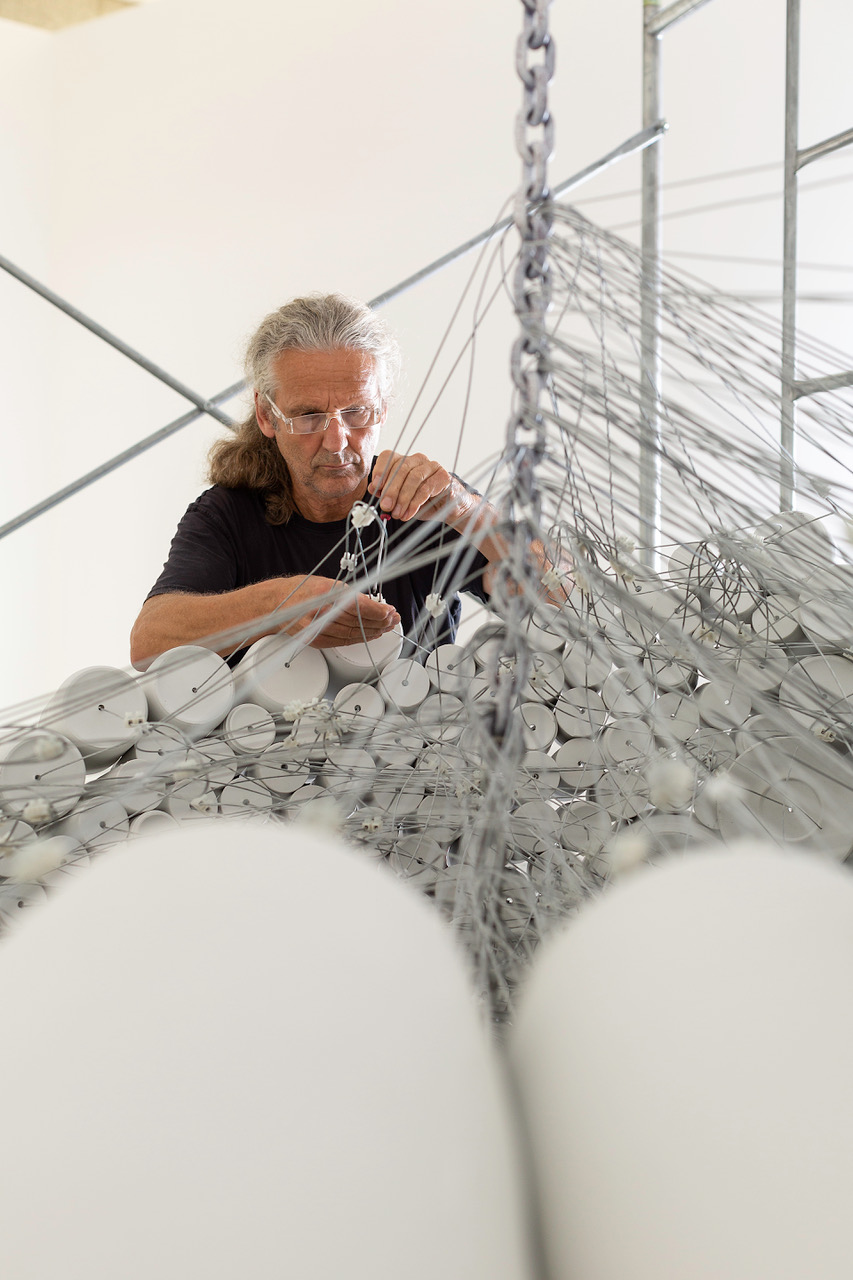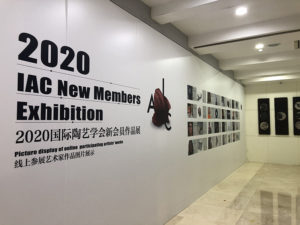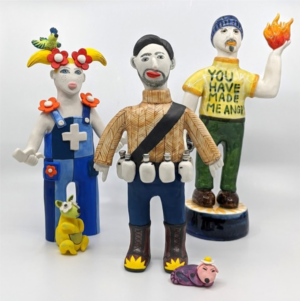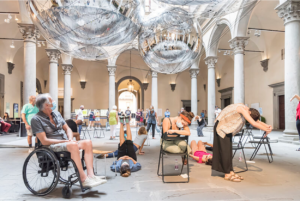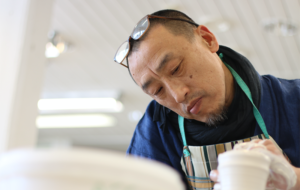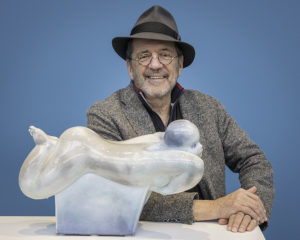Torbjørn Kvasbø – SEMINAR
|
KEYNOTE SPEECH Dear friends and colleagues, a warm welcome to you! “The complexity of Earth, Water, Air and Fire. The distance between these ancient building blocks and artworks in ceramics is surprisingly short.” (from «Earth, Wind, Fire, Water», Arnoldsche Art Publisher). The goal of the IAC is to stimulate friendship and communication between professionals in the field of ceramics in all countries. The IAC develops and encourages all forms of international cooperation to promote ceramics and to encourage and maintain production at the highest level of quality in all ceramic cultures. In November 2019, the International Academy of Ceramics signed a Strategic Cooperation Agreement with Beijing’s Guozhong Ceramic Research Institute (GIC) for the development of future projects. GIC is a nonprofit borderless institute for academic research, education and international exchange in the field of ceramics. GIC’s mission is to provide funding for specific IAC-initiated projects as well as other ceramic projects. GIC’s development objectives are consistent with the IAC’s goals and mission. The theme of this seminar needs to be sharpened. New Trends in International Ceramic Art Development : there is much, or nothing to look at using this term. Trend is a word that breeds different connotations, and I, for my part, will interpret the word as Tendencies, which is not much more precise, but reflects my attitude to art as a lasting value. |
Since the topic is extensive, it will be very interesting to hear what the following speakers will specifically direct the content towards. There is content behind all art, such as utterances or language, about events, about nature. There is content behind all our members’ statements, be it visually or in words and text or in actions. Artists are socially conscious and committed, and ceramic art deals with the same issues as all other art forms. Everything has content. |
||
|
|
|||
|
THE CLIMATE AND ENVIRONMENTAL CRISIS The climate and the environmental crisis constitute a cultural crisis. How we understand ourselves in the world and in nature, how we organize our lives and our society, and what we think about the future, are questions that force themselves forward in the face of the great changes that are taking place across the globe. Artists have long been concerned with climate and the environment. In literature, exhibitions and stage productions the death of bees is made visible, as is plastic waste, the sound of whales, the consequences of oil extraction and the relationship between climate destruction and social injustice. Does art have enough power to create change? Can cultural life find a new language for the challenges, promote action or come up with actual solutions? Is the cultural field in danger of becoming a naive echo chamber, and art purely a political tool? Is there room for the dilemmas and contradictions? What do young artists think about the art and life practice of the future? Are we moving towards a bleak future – or is there only now the momentum to really act? |
Ceramists use various strategies, skills, and a deep knowledge of materials to address ongoing environmental issues. Many of the works in the New Members’ Exhibition recognize the interdependence between humans, materials and organisms that we often overlook. Several works focus on the fragility of our earthly existence, where collaboration with materials places the artist in a position of deep connection with his surroundings, a piece of land, or with the material itself. We live in a time of enormous change in technology and science, at the same time as the environmental crisis requires discussions about our relationship with the material world. What crafts and ceramics represent, is a phenomenon relevant far beyond the field of visual art – the relationship between humans and materials. Craft artists are specialists in their chosen material, spending their entire career pushing the limits of what is possible within their materials’ boundaries. They use their extensive material knowledge to address issues relating to humans, materials and the environment. Ceramists play an active role in this philosophical discourse, as specialists acting in the clay material. |
||
|
|
|||
|
THE IAC’S ROLE IN A NEW WORLD Then, what is the International Academy of Ceramics in this world? The way we interact has already been changed since the world’s collective lockdown, with the physical now more closely intertwined with the digital, and this development will provide more sophisticated digital interaction platforms as Skype, Teams and Zoom soon become something everyone masters. Crisis often make the values we build on stronger and the value choices we make clearer. And out of major crisis, a stronger sense of community can grow. We find that we need each other for the most important things in life and in society. How do we develop the IAC for the future? What can continue as before the coronavirus pandemic, and what needs to change? Will we be able to continue to develop and adapt the IAC organization to become an increasingly relevant tool for our members? Will we be able to create enough meeting places, or must we develop alternative ways of meeting, and if so, which ones? Do we manage to keep the conversations going to maintain and develop the IAC’s mission – empathy and thus peace, the interaction between people, and between nature and people? The IAC will increase the communication between its members, more professional information about each other’s work, exhibitions and projects. We have the human resources within the framework of the IAC, between makers, writers, curators, collectors, institutions, and between all our members of all categories. We have to find ways to reduce our impact in terms of resource use and still develop ways to maintain or even increase cultural and cross-cultural exchanges. This is also a question of survival for the IAC. We need to think about how to organize our activities, individual and institutional, to meet the needs of today and tomorrow. |
How to position the IAC in a post-Covid-19 society? To name a few key areas:
We are continuously discovering new things about the world around us, and our place in it. The importance of being actively involved with our local surroundings in order to comprehend how even the smallest interventions in nature have direct and measurable consequences, provokes our need to constantly rethink and reorganise our priorities and behavioural patterns. Thank you! |
||
|
|||
Exposition des nouveaux membres de l’AIC 2020 et séminaire
L'exposition 2020 des nouveaux membres de l'AIC s'est tenue en novembre et décembre 2020 au Musée d'art céramique de Beijing Guozhong en Chine.
(Más…)Janet DeBoos – SEMINAR
Janet DeBoos is an accomplished Australian ceramicist and formerly the IAC's Council representative for Australia, New Zealand and Africa. She is known for her longstanding work with indigenous communities in Australia.
(Más…)Claudia Casali – Seminar
Claudia Casali is the Director of the International Museum of Ceramics in Faenza (MIC), Italy. Alongside her work she lectures, curates and collaborates with museums internationally as a jury member for ceramic competitions.
(Más…)Wan Liya – SEMINAR
Wan Liya is a well-established Chinese ceramicist who is the IAC's Council representative for China for 2020-2026. His work is concerned with the legacy of Chinese ceramic traditions amidst rapid changes in contemporary society.
(Más…)Wayne Higby – Seminar
Wayne Higby is a Professor of Ceramic Art and the Wayne Higby Director and Chief Curator of the Alfred Ceramic Art Museum at Alfred University in New York. His artistic practice is known for its inventive use of Raku earthenware.
(Más…)
